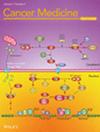Photodynamic Therapy and Dietary Antioxidants: A Dual Strategy for Genome Stability and DNA Damage Repair
Abstract
Background
Photodynamic therapy (PDT) is an emerging cancer treatment that relies on photosensitizers (PS) activated by specific light wavelengths to produce reactive oxygen species (ROS), effectively targeting malignant cells. However, ROS can also harm surrounding healthy tissues, necessitating strategies to reduce unintended DNA damage. Recent attention has turned to dietary antioxidants as potential agents to protect genome integrity and enhance DNA repair mechanisms during PDT.
Recent Advances
This review explores the complementary roles of PDT and dietary antioxidants in modulating oxidative stress and DNA repair pathways. Key DNA repair systems such as base excision repair (BER), nucleotide excision repair (NER), mismatch repair (MMR), homologous recombination (HR), and non-homologous end joining (NHEJ) are discussed in the context of their response to PDT-induced damage. The regulatory role of dietary compounds such as vitamins, polyphenols, flavonoids, phenolic acids, and alkaloids are also examined. Evidence suggests that specific dietary antioxidants can reduce ROS-induced genomic instability by enhancing the efficiency of DNA repair pathways and modulating gene expression related to repair mechanisms. The combination of PDT with antioxidant intake might reduce mutation risk in healthy cells while preserving the cellular toxicity on cancerous tissue.
Conclusion
Integrating dietary antioxidants with PDT offers a promising dual strategy maximizing tumor destruction while protecting normal cells through enhanced genome maintenance. Continued investigation is necessary to improve this synergistic approach and develop targeted protocols for clinical application, with the aim of enhancing therapeutic outcomes and patient safety.


 求助内容:
求助内容: 应助结果提醒方式:
应助结果提醒方式:


